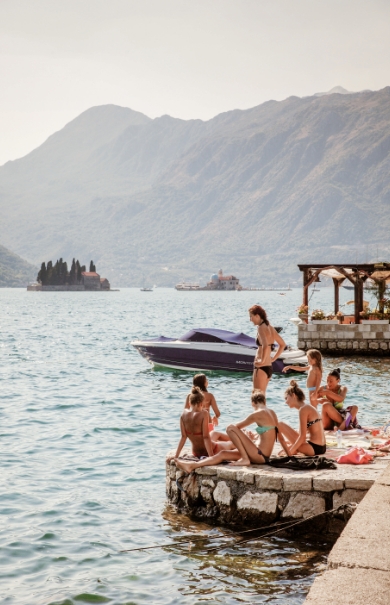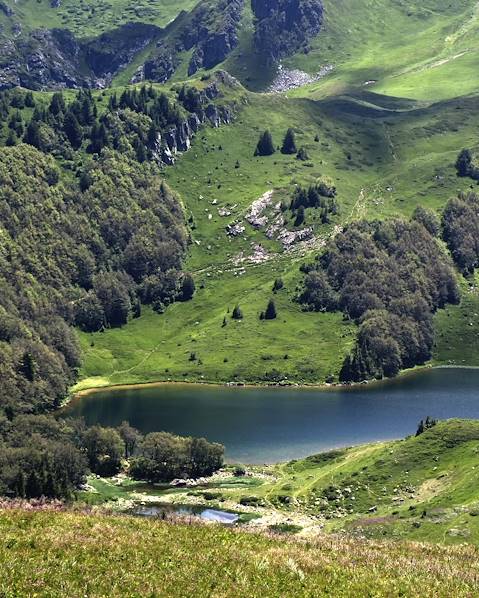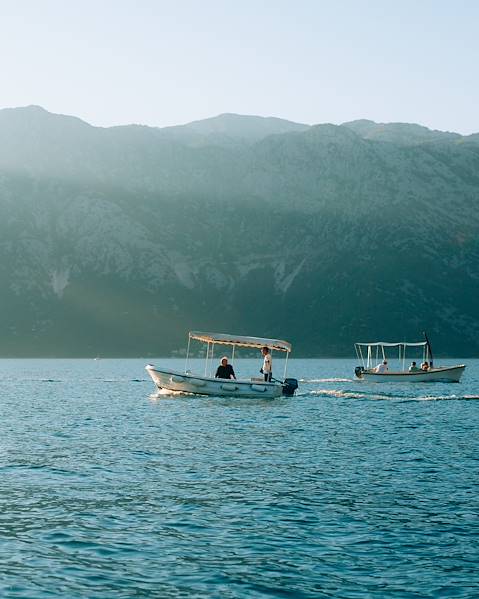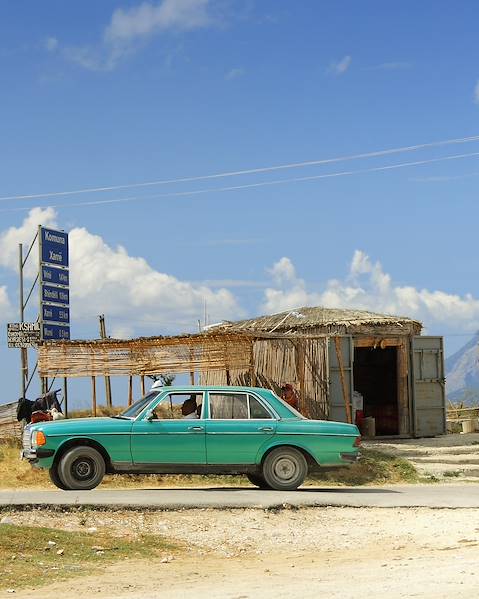Population
620,739 (2021)
Languages Spoken
The official language of Montenegro is Montenegrin, although Serbian, Croatian, Bosnian and Albanian are also recognised languages of official use too. Montenegrin, Serbian, Bosnian and Croatian are mutually intelligible as standard varieties of the Serbo-Croatian language. Montenegrin is written either with a Latin alphabet or with the Cyrillic alphabet. To mark the singularity of the national language, compared to Serbian, the authorities support the Latin alphabet and 20% of Serb speakers would be considered Montenegrins.
People
Montenegro is a diverse country, and in 2020 Montenegrins made up 47% of the population, Serbs 30%, Bosnians 8%, Albanians 5%, Croats 1% and Roma 0.8% of the population. The term Montenegrins can, in a wider sense, be used to denote all residents of Montenegro, regardless of their national and religious affiliation.
Religion
72% of Montenegrins are Orthodox, with most belonging to the Serbian Orthodox Church. Although more recently a Montenegrin Orthodox Church ideal has been promoted, but this is still in its infancy. Other religions include Muslims at 16% of the population, Catholics at around 3.5% and the Jewish community have around 400 people but there is no official state religion.
National Holiday
July 13 (recognition by the Congress of Berlin in 1878).
Holiday calendar
January 1: New Year.
7 and 8 January: Orthodox Christmas.
In March/April: Holy Week.
April 27: Constitution Day.
May 1 and 2: Labor Day.
May 9: Victory Day (against Nazism).
May 21 and 22: Independence Day.
July 13: National Day.
November 29: Republic Day.
December 25: Catholic Christmas.
The dates of Muslim holidays are movable.
Politics
Montenegro is a parliamentary republic governed by the 2007 constitution. The Unicameral parliament has 81 members, that are elected for a five-year term by proportional representation (special provisions allow the representation of even small minorities). The parliament holds the legislative power, which it shares with the government, and even the electorate; while the prime minister is appointed by the president and elected for five years.
History
The south-eastern European country of Montenegro is a part of the Balkans and is bordered by Serbia in the northeast, Bosnia and Herzegovina to the North, Kosovo to the east, Albania to the southeast, Croatia to the northwest and the Adriatic Sea to the west. The capital Podgorica is also the country's largest city and is home to around 30% of its total population.
The Early Medieval period had three principalities that were found on the territory of modern-day Montenegro: Duklja, roughly corresponding to the southern half; Travunia, the west; and Rascia proper, the north. The Principality of Zeta didn’t appear until the 14th and 15th centuries and from the late 14thcentury onwards until the late 18th century, large parts of southern Montenegro were ruled by the Venetian Republic and incorporated into Venetian Albania. The name Montenegro wasn’t officially used until the late 15th century. 1696, while under the rule of the House of Petrovic-Njegoš, saw Montenegro gain semi-autonomous status, first as a theocracy and later as a secular principality. The Great Powers at the Congress of Berlin recognised Montenegro’s independence in 1878 before the country became a kingdom in 1910.
The aftermath of World War I saw the kingdom become part of the now broken Yugoslavia, following this the republics of Serbia and Montenegro together proclaimed a federation, with an independence referendum held in May 2006, Montenegro declared its independence in June 2006 and the confederation dissolved.
Nowadays Montenegro has an upper-middle-income economy, ranking 48th in the Human Development Index. It is also a member of the United Nations, NATO, the World Trade Organisation, the Organisation for Security and Co-operation in Europe, the Council of Europe, and the Central European Free Trade Agreement. More recently Montenegro became a founding member of the Union for the Mediterranean and is currently in the process of joining the European Union.
Etiquette
Tipping is at the discretion of the customers. Nevertheless, it is customary around the world to tip when you have been satisfied with the service, so we recommend that for drivers the equivalent of two euros per day and per person, then double for the guides. As for the local staff – including waiters and porters - it can vary. It can be good to use the local price of beer or tea, for example, as a marker for the standard of living, which allows you to estimate a suitable amount to tip. Tipping at restaurants is also becoming more common, with smaller places expecting to keep small change, while larger restaurants and fine dining eateries will look to receive up to ten percent of the bill.
When it comes to clothing, a more formal and modest approach is often the way forward, with shoulders covered and appropriate attire needed for religious and sacred sites. Littering and talking politics are usually both a no go, given the tumultuous past and differing opinions.
Food
Montenegro’s cuisine is certainly a diverse one, with influences from countless different nations. It may be small, but its dishes certainly pack a punch, with different regions having equally diverse offerings. The coastline has plenty of seafood options and in Lake Skadar, carp thrive, and the locals enjoy it with a mixture of vinegared fruits. You can also eat the ajvar condiment with everything from aubergine to mixing it into a spin on an old classic, chilli con (carne) ajvar.
However, it’s the country’s mountainous region that’s most well-known for all things meat-based. Whether it’s pašticada (a baby beef neck or shoulder in a rich wine infused tomato sauce) or Smocani kacamak (a fatty porridge) there are countless Montenegrin favourites to try. Not forgetting the three internationally renowned Montenegrin foods, Njegusi Prosciutto, Njegusi steak, and Njegusi cheese, all of which are considered delicacies.
Street food is also widely available, with many treats to be had on-the-go. There’s Pljeskavica and cevapi, which are two versions of the same dish; a mixture of minced meat (usually lamb and beef) with onion, that’s then grilled and served in pita bread with a few tasty condiments thrown in for good measure. You can find it on almost every street corner, with the first presented as a minced steak and the second shaped into rolls. The two serving choices really do make all the difference and have sparked debate on which is best for generations!
Drink
We suggest drinking bottled water, and those in search of something alcoholic can enjoy the national brand of beer, Niksicko, which is brewed in Niksic. Or there’s fermented milk, fruit juices and plenty of soda options too. Montenegro also produces a variety of wines, there’s the Vranac grape variety for all things red and krstac, an old indigenous grape variety, for everything white wine related. Mead, medovina, is also a delicacy, as is Loza (a wine brandy), that’s often enjoyed as an aperitif but be warned, it’s surprisingly strong!
















